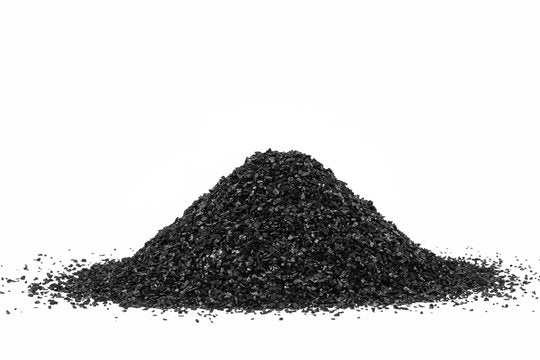Water quality is the foundation of a healthy aquarium. Whether you keep freshwater or saltwater fish, using reverse osmosis (RO) water ensures a clean starting point. But to get the most from your RO system, one crucial upgrade is often overlooked: catalytic carbon.
If you're building or maintaining a reef tank, planted aquarium, or freshwater setup, understanding why catalytic carbon is superior to standard activated carbon is key to better results.
What is Catalytic Carbon?
Catalytic carbon is a specialized type of activated carbon that has been treated to improve its ability to remove chemical contaminants. It is especially effective at breaking down chloramine, which is a combination of chlorine and ammonia used in municipal water supplies.
Unlike regular activated carbon that only adsorbs contaminants, catalytic carbon reacts with them, making it far more effective at neutralizing certain harmful substances.
Why Catalytic Carbon Matters in RO Water
Many cities now use chloramine instead of chlorine to disinfect tap water. Chloramine is much harder to remove and can pass through standard carbon filters. If left untreated, it can damage RO membranes and pose a serious threat to aquarium life.
Here are a few reasons why catalytic carbon is important
- Removes chloramine by breaking it into harmless components
- Protects the RO membrane from long-term chemical damage
- Prevents ammonia from entering your aquarium
- Delivers safer, cleaner water for fish, corals, and invertebrates
Benefits of Using Catalytic Carbon
1. Reliable Chloramine Removal
Catalytic carbon breaks the bond between chlorine and ammonia, something regular carbon cannot do effectively.
2. Better Protection for Aquarium Livestock
Even low levels of chloramine or ammonia can harm fish and corals. Catalytic carbon ensures your RO water is safe before it reaches your tank.
3. Extends RO Filter Life
By neutralizing chloramine before it reaches your membrane, catalytic carbon helps reduce wear and replacement costs.
4. Improves Water Quality and Stability
Cleaner source water leads to more predictable water chemistry, better nutrient control, and reduced algae issues.
5. Ideal for High-Performance Systems
Premium catalytic carbon is hard, low-dusting, and performs well in high-flow environments.
How to Use Catalytic Carbon with Your RO System
- Install a catalytic carbon filter cartridge before your RO membrane
- Use a loose-fill cartridge or pre-packed block designed for aquarium use
- Replace the carbon filter every 6 to 12 months, depending on your water quality and usage
- Ensure water flows evenly through the filter to prevent channeling
Featured Product: VodaFlux Catalytic Carbon
At Aquarium Depot, we offer VodaFlux Catalytic Carbon, specially selected for aquarium RO applications. It removes chloramine efficiently, has low dust content, and is suitable for both freshwater and marine setups.
Browse VodaFlux Catalytic Carbon
Final Thoughts
Catalytic carbon is an essential upgrade for anyone using an RO system in the aquarium hobby. It protects your livestock, improves water quality, and keeps your filtration system running efficiently.
If you want to give your tank the best possible start, choose catalytic carbon and experience the difference in clarity and health.

